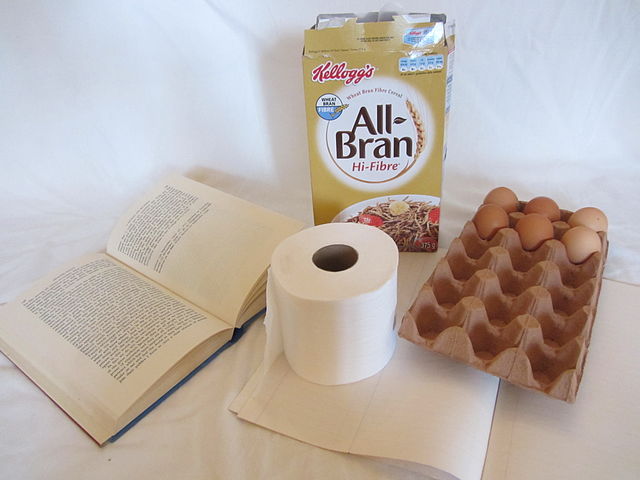A paper mill is a factory devoted to making paper from vegetable fibres such as wood pulp, old rags, and other ingredients. Prior to the invention and adoption of the Fourdrinier machine and other types of paper machine that use an endless belt, all paper in a paper mill was made by hand, one sheet at a time, by specialized laborers.
International Paper Company's Kraft pulp and paper mill in Georgetown, South Carolina. When built, this was the world's largest mill.
Basement of paper mill in Sault Ste. Marie, Ontario. Pulp and paper manufacture involves a great deal of humidity, which presents a preventive maintenance and corrosion challenge.
A mid-19th century paper mill, the Forest Fibre Company, in Berlin, New Hampshire
Dutch paper mill from 1654 in the Arnhem open-air museum
Paper is a thin sheet material produced by mechanically or chemically processing cellulose fibres derived from wood, rags, grasses, or other vegetable sources in water, draining the water through a fine mesh leaving the fibre evenly distributed on the surface, followed by pressing and drying. Although paper was originally made in single sheets by hand, almost all is now made on large machines—some making reels 10 metres wide, running at 2,000 metres per minute and up to 600,000 tonnes a year. It is a versatile material with many uses, including printing, painting, graphics, signage, design, packaging, decorating, writing, and cleaning. It may also be used as filter paper, wallpaper, book endpaper, conservation paper, laminated worktops, toilet tissue, currency, and security paper, or in a number of industrial and construction processes.
Paper products: book, toilet paper, ruled paper, carton, egg box
Hemp wrapping paper, China, c. 100 BCE
The microscopic structure of paper: Micrograph of paper autofluorescing under ultraviolet illumination. The individual fibres in this sample are around 10 µm in diameter.
Paper mill in Mänttä-Vilppula, Finland








